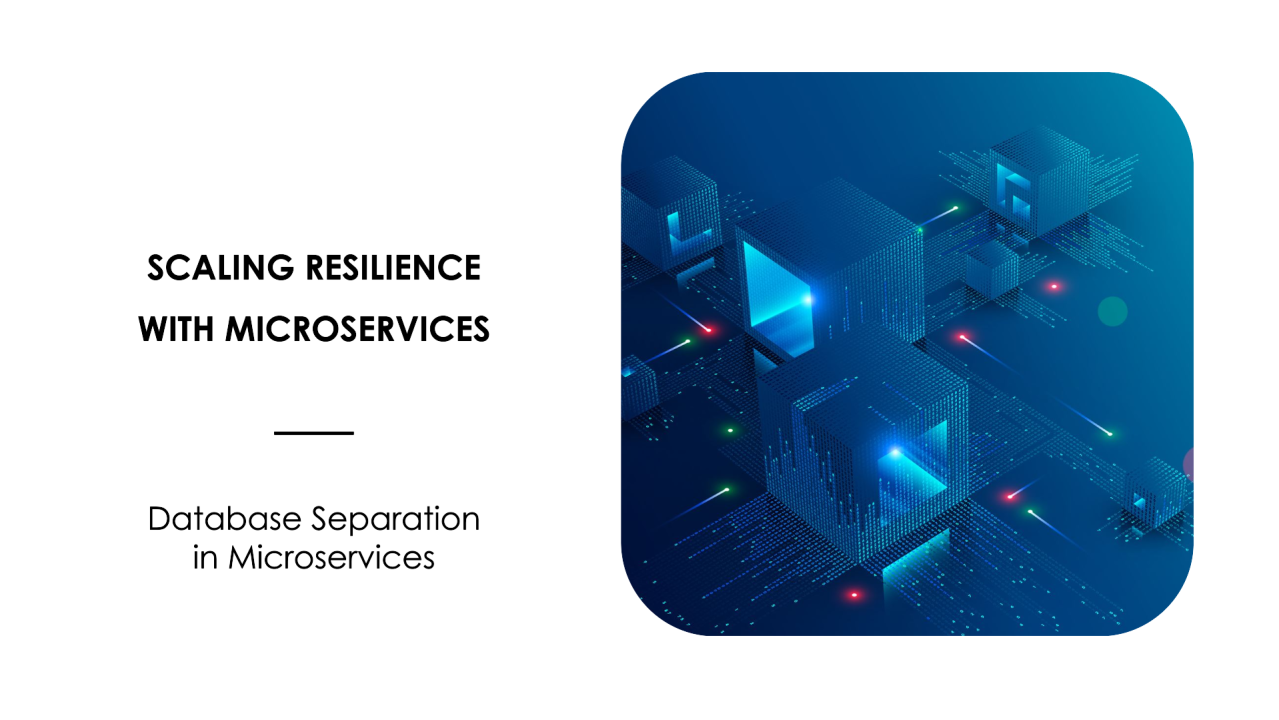
Preface
In modern software development, the microservice architecture has gained immense popularity for its scalability, flexibility, and resilience. One of the key design principles of microservices is the concept of service autonomy, where each microservice operates independently, owning its data and functionality. This often leads to a scenario where data is distributed across multiple databases, with each microservice having its dedicated data store.
What's the purpose of splitting up data?
Microservice architecture breaks down complex applications into smaller, manageable services, each responsible for a specific business capability, where each microservice typically has its own database to its specific requirements. By separating data into different databases offers several advantages, including improved scalability, better isolation, and enhanced flexibility.
- Service Autonomy: By having its dedicated database, each microservice can independently manage its data without impacting other services.
- Improved Scalability: Database separation allows for vertical and horizontal scaling of individual microservices based on their unique performance requirements.
- Enhanced Resilience: Isolating data into separate databases reduces the blast radius of failures. If one microservice experiences an issue with its database, it is less likely to impact other services.
- Customized Data Stores: Some services may require relational databases for structured data, while others may benefit from NoSQL databases for handling unstructured or semi-structured data.
Use Case
Let's consider a hypothetical scenario where we're building an e-commerce platform. In this platform, we have a need for relational data (like orders, customers, and products) which could be well-structured and easily queried, so we opt for a relational database such as PostgreSQL. Additionally, we have certain unstructured data like user interaction tracking service(tracks user interactions for analytics) that doesn't fit nearly into a relational schema, so we could choose non-relational document database for instance MongoDB for its flexibility and scalability in handling such data. Let's consider four microservices:
- Customer Service (Relational DB): Manages customer data.
- Order Service (Relational DB): Handles order processing and management.
- Product Service (Relational DB): Manages product catalog information.
- User Interaction Tracking Service (NoSql or Text or Key-value etc.): Tracks user interactions for analytics.
Please keep in mind that each microservice has its own database, and when a user places an order, we have to ensure global consistency across all databases.
Challenges and Considerations
While database separation offers numerous benefits, it also introduces challenges that need to be addressed:
- Consistency Across Databases: Integrating multiple databases seamlessly and maintaining consistency across multiple databases can be challenging, especially in distributed transactions involving multiple microservices. Ensuring global consistency while preserving service autonomy requires careful coordination and distributed transactions management.
- Data Synchronization: As data is distributed across multiple databases, mechanisms for synchronizing data between services may be necessary to ensure data integrity and coherence. Techniques such as event-driven architecture and eventual consistency patterns can be implemented to synchronize data asynchronously.
- Operational Complexity: Managing multiple databases adds complexity to deployment, monitoring, and maintenance operations. Automation tools and robust DevOps practices are essential for managing the operational overhead associated with database separation in microservices architecture.
Conclusion
Database separation is vital in microservices, empowering each service with autonomy, scalability, and resilience. This approach, which disconnects data storage from application logic, allows teams to create adaptable systems that meet evolving business needs. Despite challenges like consistency maintenance and operational complexity, the advantages far surpass the drawbacks, making it an invaluable strategy in modern resilient distributed microservices architecture.
NOTE: I'm constantly delighted to receive feedback. Whether you spot an error, have a suggestion for improvement, or just want to share your thoughts, please don't hesitate to comment/reach out. I truly value connecting with readers!